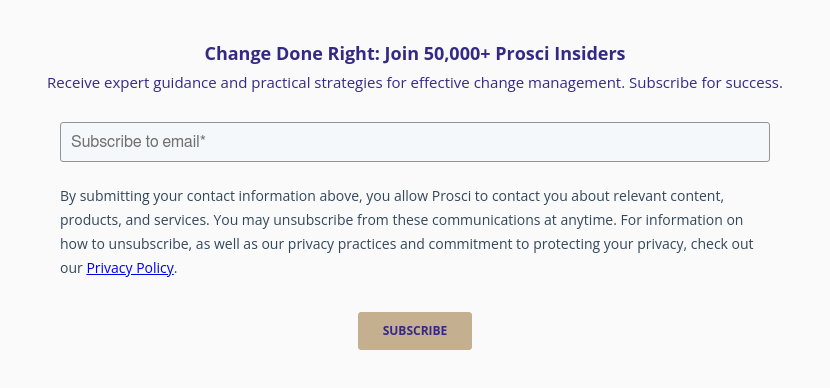
How to Apply Yesterday-Tomorrow Exercise
As an example, let’s consider a significant change that impacted teachers and students a few years ago: moving to online learning during a global pandemic. While post-secondary institutions already provided distance learning options, elementary and secondary schools had no roadmap, and it had to happen quickly.
Defining yesterday and tomorrow
To start managing a change like this, you must determine which aspects of people’s work need to change and the degree of impact they will experience. You need consider both the way things were done before the change became necessary and how the work will need to be done consequently.
Using our online learning example, let’s review the change impacts for the two significantly impacted groups: teachers and their students. Students are not employees, of course, but they are stakeholders whose work is impacted.
In this case, we identified significant impacts to at least six of the 10 aspects. Your initiative may or may not include all 10 aspects, but systematically working through the full list enables you to define both what is and what is not changing while surfacing the important aspects of the change you must consider.
10 Aspects of Change Impact
 1. Processes – The actions or steps taken to achieve a defined end or outcome.
1. Processes – The actions or steps taken to achieve a defined end or outcome.
For teachers, the processes used to deliver high quality learning include developing lesson plans, facilitating individual and small-group activities, and assessing knowledge through assignments and tests. In an online learning environment, teachers need to make changes to these processes.
Students are accustomed to following defined processes under the observant eye of a teacher. The switch to online learning requires new ways of learning and increased self-discipline. For younger learners, there is a need for greater parental involvement to support the learning processes.
2. Systems – The combination of people and automated applications organized to meet a set of objectives.
Teachers need to modify existing educational systems, such as tracking attendance and learning progress, to support online learning.
3. Tools – The items or implements used for a specific purpose, such as machinery or web authoring tools or a software program.
Online learning delivery requires teachers to learn how to use new applications that support online interaction. Examples include polling software and technology tools such as webcams to support virtual connections. For some students, needing access to required technology tools, such as a laptop with a webcam, could be a challenge.
4. Job Roles – the description of what a person does, including competencies essential to performing well in that job capacity.
Although the teachers’ job role is essentially the same, moving from yesterday to tomorrow requires new competencies to be effective in that role. Delivering a high-quality virtual learning experience requires the teacher to use different cues and approaches from those used in an in-person classroom setting.
5. Critical Behaviors – the vital or essential response of an individual or group to an action, environment, person or stimulus.
6. Mindset, Attitudes and Beliefs – a mental inclination, disposition or frame of mind reflected in behaviors.
One of the most significant mindset shifts, particularly for a teacher with many years of classroom experience, is acknowledging that high-quality learning can be accomplished without a physical presence. For students, who are used to being surrounded by classmates in a social environment, learning more on their own also requires a significant mindset shift.
7. Reporting Structure – the authority relationships in a company or organization (i.e., who reports to whom).
8. Performance Reviews – the process for and indicators of how an organization measures and assesses performance relative to objectives.
9. Compensation – the amount of the monetary and non-monetary pay provided in return for work performed.
10. Location – a physical geographical place that provides facilities for a stated purpose.
The requirement of a quiet space for delivering or participating in a class represents a significant challenge, depending on individual living situations.
The ADKAR Model
The Prosci ADKAR® Model is still the easiest, quickest way to plan a change, even when the change requires high levels of flexibility and agility. After completing the Yesterday-Tomorrow Exercise, you can apply the outputs to each ADKAR element to arrive at targeted, actionable steps quickly.
Prosci ADKAR Model

Awareness – For teachers, targeted action steps for building Awareness include enabling senior leaders from the school systems organization explain to students, teachers and parents in a clear and compelling way why the shift to online learning is required. They would also express the urgency of making the change immediately, along with risks to the educational system if the change is not successfully managed.
Desire – To influence Desire, action steps include appealing to teachers and their commitment to their role as educators. This helps them see the personal benefits of developing the skills necessary to teach effectively in a virtual setting and committing to support other teachers as they develop the necessary ability.
Knowledge – Developing Knowledge of how to teach online means teachers need immediate access to the required tools and training on how to use them.
Ability – Action steps for developing Ability could include pairing teachers who have experience delivering online learning with those who don’t, to provide coaching and encouragement. Providing timely access to technical assistance is also a helpful tactic.
Reinforcement – To ensure that the change delivers desired outcomes (achievement of learning objectives by the students), teachers need Reinforcement in the form of positive recognition for their efforts in making the shift from the classroom to online learning. This recognition must come from senior leaders. Practical steps could include leaders observing teachers in action, providing positive feedback on their efforts and ensuring access to additional support as needed.
Use ADKAR to Assess Impacts Quickly
Although detailed assessments and detailed, traditional change management plans won't help with crisis-related changes requiring a rapid response, our ADKAR Model is still the easiest, fastest way to plan a change. Combining the Yesterday-Tomorrow framework with the ADKAR Model yeilds concrete, actionable steps while enabling you to re-adjust as needed.







